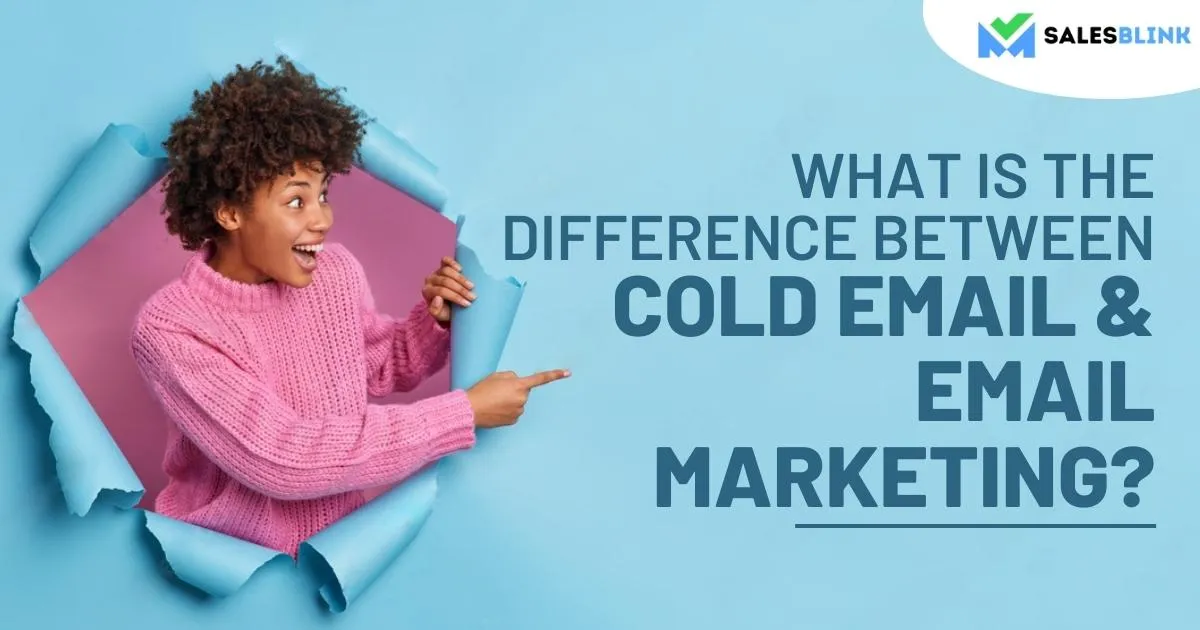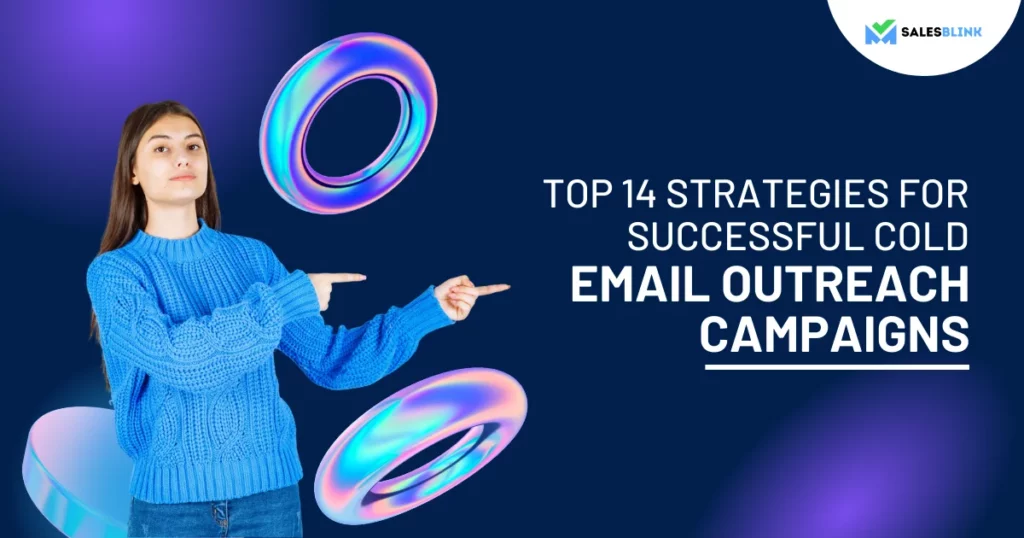What Is The Difference Between Cold Email & Email Marketing?
Do you know that 85%, in the US use email (Statista, 2017)? This figure is greater than the number of people using search engines and using social media.
Therefore, email is one of the best ways to market a product. It is a digital marketing strategy focused on sending emails and establishing relationships with prospects and customers.
Email has an extensive reach and, therefore, is the first choice for marketing. But most people are not aware of the difference between cold email and email marketing. That is what we are going to help you with in this blog post.
Let’s dive in!
Table Of Contents
- Cold Email Vs Email Marketing
- Difference Between Cold Email And Email Marketing With Example
- Benefits Of Cold Email & Email Marketing
- Recipients Of Cold Email & Email Marketing
- Purpose Of Cold Email & Email Marketing
- Level Of Personalization In Cold Email & Email Marketing
- Forms Of Cold Email & Email Marketing
- Sending Volume Of Cold Email & Email Marketing
- Sending Frequency Of Cold Email & Email Marketing
- Common Mistakes To Avoid
- Why You Should Not Use Email Marketing Tools For Cold Emailing?
- Use SalesBlink For Cold Emailing
- Tools For Cold Email & Email Marketing
- FAQs
Cold Email Vs Email Marketing
A successful email marketing strategy transforms prospects into consumers and turns first-time buyers into repeat customers. Cold email is only a part of email marketing. While cold emails attempt to reach out to prospective customers, email marketing also includes attempts to build brand awareness, trust, and loyalty irrespective of whether recipients are prospects or current customers.
It is essential to know the difference between cold email and email marketing.
Difference Between Cold Email and Email Marketing With Example
Let’s find out how different cold emails are from marketing emails.
The main difference between sending cold emails and email marketing is the type of recipients. While for cold emailing, you have to search for recipients online, which means you choose them, but for email marketing, you have a list of subscribers to email to.
The other differences include the purpose of emailing, personalization level, forms, sending volume, and frequency. We’ll take a closer look at the differences ahead in this blog.
Here is an example of a cold email:

Here is an example of a marketing email:

Benefits Of Cold Email & Email Marketing
You would be surprised to know that the ROI of email marketing is a whopping 4200%. That means you can get $42 for every $1 you spend.
Talking about cold email, 78% of decision-makers feel that a cold email is quite successful in scheduling a meeting or starting a conversation.
Let’s look at the benefits each of them have to offer,
Benefits of marketing email
1. Email marketing helps in building trust between contacts and businesses. Staying in touch regularly will make subscribers feel connected with the brand.
2. It provides an idea regarding the engagement of recipients with your product or service.
3. It helps in funnelling down marketing qualified leads into sales qualified leads. Read more about the Lead Qualification guide.
4. With email marketing, you can convert leads into paying customers.
Benefits Of Cold Emails
1. Cold email helps broaden the reach of your business. And this is not limited to reaching potential clients! You can even use cold emails to recruit affiliate marketers or reach potential employees, for instance.
2. It helps in building email lists as well
3. Using cold emailing, you can get prospects into the sales funnel, which is essential to start the sales cycle.
4. It helps convert prospects who use rival solutions.
Recipients Of Cold Email & Marketing Email
The first step for an email marketing campaign is to build an email list. Businesses usually give away something for free to entice customers. They also offer product updates and newsletters to build the email list.
Marketing emails target the audiences who have already used the product/service and want to receive emails from the business, i.e. you. In a way, they have an interest in learning more about the brand.
You can say that they chose you by signing up for a free trial, agreeing to receive your newsletter, or filling out your order form. The expectation that they have from you is to receive emails from you and have the option to unsubscribe when they want to.
Cold emails use this step to attract new customers who have no idea about the business sending them emails and have never engaged with the brand. In other words, cold emails are emails sent from a business to potential customers with whom they have had no prior contact.
Cold emails help in networking by letting potential customers become aware of the product or service. The network created, in turn, leads to lead generation, the first step of the sales process. Once the lead is generated and the customer is interested in the product or service, the seller can follow up and close the sale. Hope that answers – what is a cold email campaign.
You as a business choose your recipients in the case of cold email outreach. These are people who aren’t subscribers to your blog. At the same time, they didn’t opt for a free trial of your product or service. Receiving emails from you is something they did not anticipate. As a marketer, it is up to you to send such cold emails that the surprise is a pleasant one.
Purpose Of Cold Email & Email Marketing

Marketing emails aim to direct the recipients elsewhere, such as a blog, a website, a PDF, or a podcast. The motive is to stay in touch with subscribers by providing them with valuable information. Doing so will make them reach out to you when they need your solution.
Contrarily, with cold emails, you search for people and try to understand their business needs and see how your product or service can fit into their requirements.
Cold emails are generally for starting a B2B conversation that can result in a business deal or a long-term business relationship. Here you would want the recipient to reply to you. Getting a response gets the ball rolling, and that is the aim of a cold email.
Cold emails have a connection with the sales process, whereas marketing emails are a part of the marketing process. While sales and marketing processes have a link, you cannot expect to boost sales by sending emails for email marketing to cold prospects.
Level Of Personalization In Cold Email & Marketing Email
Personalization is essential in drafting a cold email. Without this aspect of a cold email, it may sound tone-deaf to the recipient. Businesses need to research and create a list of prospects and then draft emails that let the recipient know that the business is interested in them.
For example, addressing the recipient by their name instead of writing “Hello Prospect” makes the cold email more personalized. Read more about personalized cold emails
Marketing emails require quality content in the email copy because the subscribers chose you, and they would have high expectations from you. They understand that your emails are automated ones, and they will be okay with it as long as the emails have some personalization like a “Hi, Sara” or a “Hello Chris”.
Forms Of Cold Email & Marketing Email
Marketing emails have the brand’s logo, bright fonts, and colors along with attractive photos and pics. They have buttons to direct recipients to other links. However, at times marketing emails are simple too. But all of them have a link in them that the recipient has to click on to read a blog post, visit a website, or download content.
In contrast, cold emails are always simple. They have to look like one on one emails that one gets from friends and family. Cold emails need to have plain text and seem as simple as possible. It shouldn’t be too lengthy. A few sentences would do, and instead of the links, it should have a question or request for the recipient.
Sending Volume Of Cold Emailing & Email Marketing
Having a list of subscribers would make you want to let it grow quickly. The aim would be to get a minimum of 1000 subscribers. Every time you develop a marketing campaign, you would like to send emails to all the subscribers on your list. There is some segmenting to personalize content to a certain extent. However, in an email marketing campaign, you will be sending thousands of emails simultaneously.
In contrast to the above, while building lists for cold email campaigns, you will aim at fewer prospects at a time. You have to do research and gather specific information about every prospect. You would add that piece of information to the body of the email. That is a time-consuming process that involves a lot of research.
For that reason, cold email campaigns have not more than 100 prospects. Also, you would each of the prospects an initial email followed by eight follow-ups. The cold emails have personalization elements to make the prospects feel that you have tailor-made the emails for them.
Therefore, a critical difference between email marketing campaigns and cold email campaigns is that you would send thousands of emails in the former and maybe just 50 in the latter.
Sending Frequency Of Cold Email & Marketing Email
Marketing emails aim to make the brand live in the minds of the recipients always, and for that, they have to hit the inbox of subscribers regularly. Also, as subscribers already know that the emails are automated, you should send them regularly.
In contrast, recipients of cold emails never expected emails from you in the first place, which means the frequency would be less. Also, follow-up emails have to be sent individually. By no means can they look as though an automated tool is sending them.
You should not send cold emails every 3rd day or weekly as it will not look personal at all.
Common Mistakes To Avoid
Here are some common mistakes people make in Cold Emailing and Email Marketing.
Cold Email – Common Mistakes
You can reap the benefits of cold emails if you write them well. Cold emails are like darts thrown in the dark. It might strike the target sometimes, and sometimes it might not.
However, to maximize one’s chances of hitting the target, it is crucial to make sure that you throw the darts in the right direction. Follow pointers for writing a cold email, or else recipients may mark it as spam.
1. Talking about product features instead of benefits
A cold email should outline the benefits of using the product or service. The recipients should feel that the product solves a major problem or offers something unique.
The email should focus only on the benefits instead of mentioning all the features of the product/service. An effective cold email is short and comes to the point quickly. It should let the recipient know that their time is valued.
2. Not mentioning the CTA (Call-to-action)
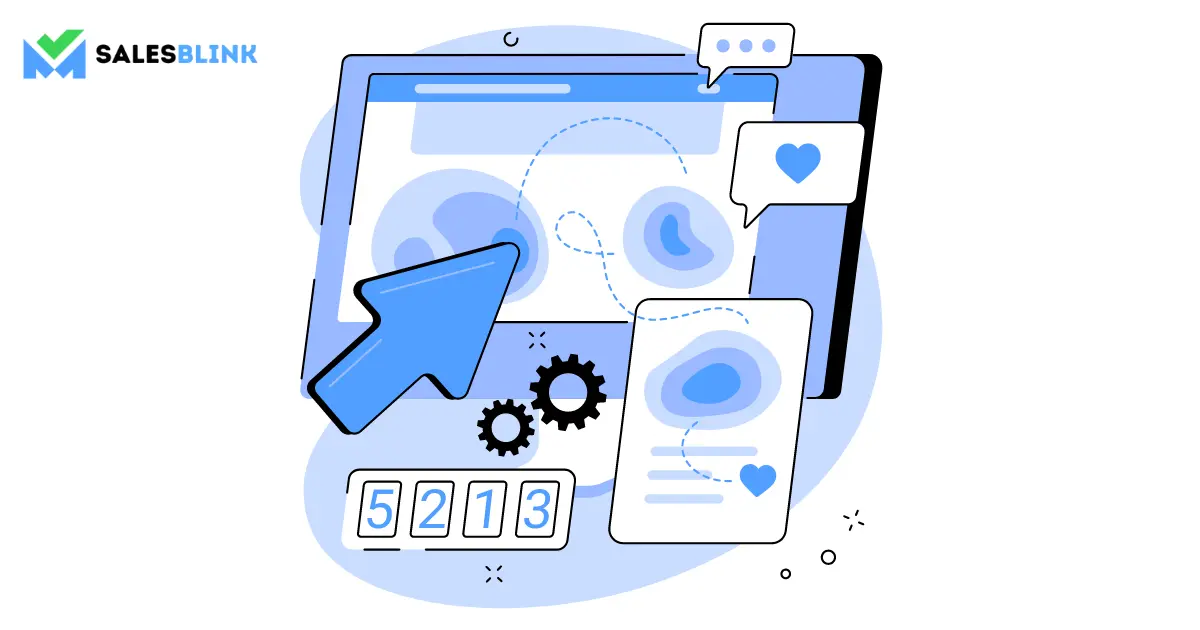
Cold emails usually end with a call to action. This part specifies exactly what the seller wants the recipient to do, whether it is replying to the email or providing feedback. Not mentioning a CTA can make the recipient wonder what to do next, resulting in no response from their end. ‘
3. Mentioning a complex CTA
The CTA should be simple so as not to put off the recipient. The recipient should not find the call to action taxing on their energies. Multiple CTAs will only lead to confusion.
Here is an example of how using multiple CTAs in your cold email can confuse prospects:
Increase revenue in 30 days. Click here for a free demo. Follow us on Twitter.
Here is how you can use CTA the right way,
Start a free trial!
4. Having a very long email body
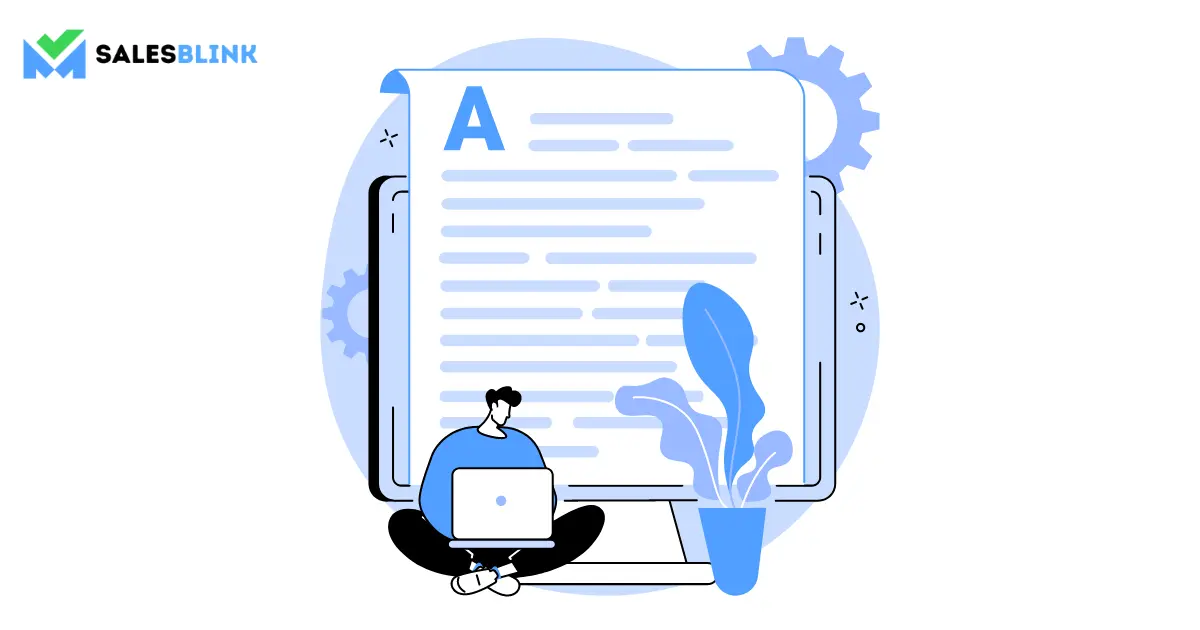
You must keep the email copy concise and compact. Nobody has the time to read lengthy paragraphs. You must get to the point as soon as you can and tell the prospect how your product or service can help them. Try to grab the attention of the recipient right at the start.
5. No ‘from’ name
The cold email should have your credentials so that potential customers are not suspicious of who you are. While you have conducted research and know information regarding the recipients, the recipients don’t know anything about your business.
Having a ‘from’ name can make the recipient feel that a human has sent the email to them, and they would be more likely to respond.
If you fix the above in your cold email strategy, you can get more replies from prospects.
Email Marketing – Common Mistakes
The email marketing campaign must meet the customers’ expectations. Here are a few mistakes you must avoid:
1. Using way too many graphics and photos
Your email campaign can have graphics, but you should not overload the email with them. Too many photos and graphics can turn off the recipient. So, have the right mix of graphics in the email to make it look appealing.
2. Not staying in touch

Email marketers either send too many unwanted emails or don’t stay in touch with a contact. Don’t let too much time pass between two emails, or they will lose interest in you. Maintain a desirable email frequency by automating the process.
3. Not being mobile-friendly
The content of the email should be such that mobile device users can easily view it. There must be no load time and quality issues. Creating mobile-friendly emails is the need of the hour as many people use their smartphones and tabs to check emails on the go. About 67% of recipients use their mobile to check emails.
4. Not tracking campaigns
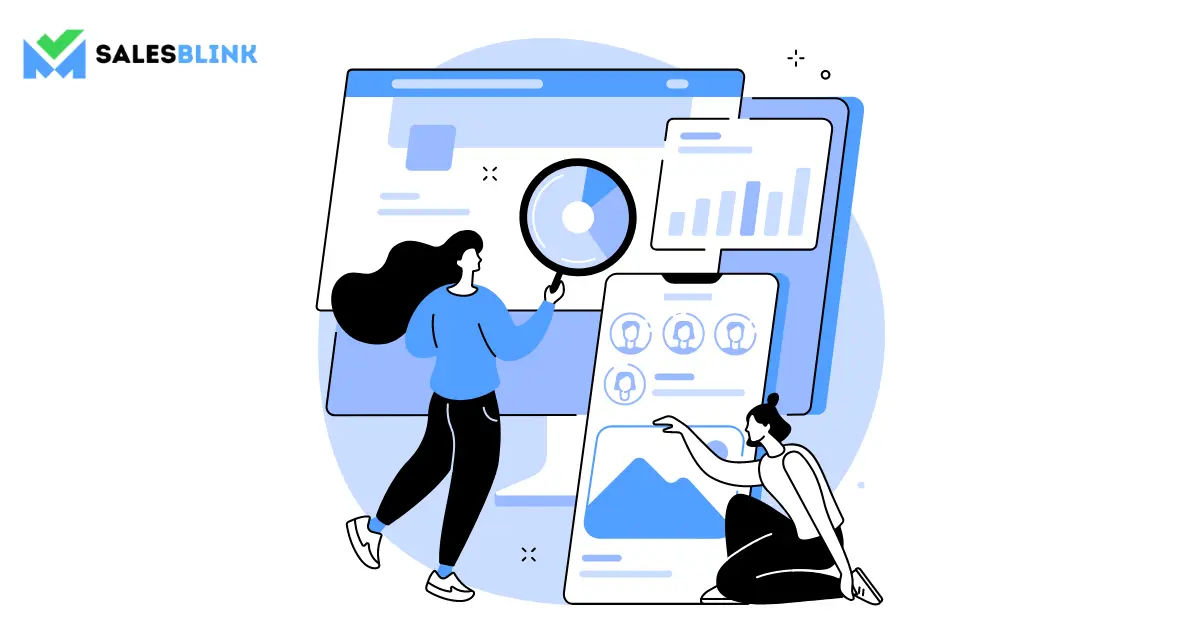
By tracking emails, you can find out which of the messages are getting responses to and which ones end up in the trash folder. This helps in finding out what works and what doesn’t. There are a lot of tools to help you with this.
Why You Should Not Use Email Marketing Tools For Cold Emailing?
Have you ever thought that you can send cold emails using an email marketing tool? Well, you’ll mess things up if you do so! Here’s why,
You may get blocked
There is always an unsubscribe text in the emails you send from email marketing tools. If the unsubscribe rate is higher than 5%, it can get your email account blocked. It is highly likely for that to happen when you send cold emails using email marketing tools because you don’t get the recipient’s permission before you cold email them.
Also, an email marketing tool sends all the emails to contacts in one go which can make your emails look like spam. This way, your account is likely to get blacklisted by your ESP.
You will end up in the promotions tab
Whenever you send emails using tools like Mailchimp, they’ll land in the promotions tab of your mail account. This is mainly because marketing emails are sent from the tool’s server, have a no-reply address sent from address, and are graphic-heavy. Therefore, if you use an email marketing tool to send cold emails, you will never make it to the inbox.
You will violate the terms of use of email marketing tools
Sending cold emails is against the policy of email marketing tools. As already mentioned, you can’t use these tools to send emails to individuals who have not given you the permission to do so. You can use email marketing tools to send emails only to those who opt-in to receive emails from you. However, in cold emailing, recipients don’t anticipate hearing from you. Instead, you find leads’ email addresses, create a list and reach out to them, which is not in sync with the policy of email marketing tools.
Use SalesBlink For Cold Emailing
All of the above clearly shows you that you need a dedicated tool for cold emailing and SalesBlink is just the tool for you.
You can use SalesBlink, an automated cold outreach tool, to send cold emails that seem to be coming personally from you instead of the bot-like email blasts done in marketing. The tools sends your emails one by one instead of sending all of them at once which improves your sender reputation and deliverability.
Moreover, it is easy to personalize emails at scale using variables and make every email look tailor-made for the prospect. You also have image personalization to make the email stand out from the other emails prospects receive.
Additionally, you need not add unsubscribe text to cold emails you send from SalesBlink. Plus, the cold emails you send from our tool will land in prospects’ inboxes if you follow the best email deliverability practices. Therefore, using SalesBlink for cold emailing is the best effective outreach option to help you close more deals.
Tools For Cold Emailing & Email Marketing
Let’s look closely at the tools for cold emailing and email marketing.
Cold Email Outreach Tool
The key features of a Cold Email Outreach tool are the following:
1. They should provide you with personalized email templates.
2. The tool should have automated cold email sequences and follow-ups.
3. It should allow you to do advanced tracking.
4. You should be able to see all the details in one place.
Here are a few tools to use for automated cold outreach,
1. SalesBlink

SalesBlink is a full-stack cold sales outreach platform. Once you have a list of prospects, you can automate email outreach sequences and follow-ups effortlessly. Apart from that, you can track opens, clicks, and replies using SalesBlink. Not just with cold outreach, this tool also helps with scheduling meetings and closing deals. What’s more, you can easily integrate SalesBlink with many other apps and warm up your email account.
Overall, it is a tool that handholds you throughout the sales process.
Pricing:
Scale- $29/month
Growth- $99/month
Business- $199/month
2. Close

Close is a helpful tool that allows you to send many emails at once, tracks communication with leads, and provides preloaded templates that the tool automatically populates. It makes the task of cold emailing simple for businesses with automated email sequences and follows ups. The ease of use is another significant advantage. Setting it up and training employees is easy.
Pricing: The paid plan starts from $29 when billed monthly.
3. Outreach

Outreach is filled with features that work well for outbound sales teams. Apart from email, you can reach out to prospects using other channels, such as phone and LinkedIn. You can create multi-channel sequences and personalize your outreach to get maximum response. The platform helps sales managers gauge the performance of every rep in the team with the help of the detailed analytics the tool provides.
Pricing: You have to request a quote.
4. SalesLoft

SalesLoft is a sales engagement tool that lets you create email templates and reach out to prospects and track the outcomes. With SalesLoft, it is possible to view all the sales tasks in a single location to know that you have to reply to the prospect. The sales heads can keep an eye on the sales reps’ activities on the tool to have an idea about their performance. Also, the tool enables easy integration with other platforms to help the processes stay synchronized.
Pricing: You have to request a quote.
Email Marketing Tool
The key features of a Marketing Email tool are the following:
1. Operational email deliverability to ensure that the emails hit the inbox of subscribers.
2. Email journey builder to create professional emails to engage existing and potential customers.
3. Personalized emails using dynamic content to grab the attention of recipients.
4. Send time optimization to launch emails at the right time.
5. Round-the-clock online support.
6. Easy integration with other apps and tools.
Here are a few tools used for Email Marketing,
1. Mailchimp

Mailchimp is an email marketing platform that helps businesses manage mailing lists, create email templates and automate email campaigns. It is an all-in-one tool that offers features like the smart recommendation that gives you insights to fine-tune your marketing strategy. You can automate emails for different phases of the buyer journey and send welcome emails, order confirmations, and reminders of an abandoned cart.
Pricing: The paid plan starts at $9.31 per month.
2. Userlist

Userlist is a complete email marketing solution built specifically for SaaS. With this tool, you can deliver all kinds of SaaS-specific behaviour-based email campaigns like newsletters, one-off broadcasts, onboarding emails, lifecycle emails, and lead nurture sequences.
It includes features that help you manage customer relationships — in-app messages, advanced segmentation, complete user management, and more. Userlist’s special sauce is full support for company accounts, including complex many-to-many relationships between companies and users.
Pricing: The paid plan starts at $149 per month.
3. Sendinblue

Sendinblue email marketing software is a platform that offers email marketing tools along with CRM (customer relationship management) and functions like the creation of a landing page. There are more than 70 templates for you to use. Another feature of Sendninblue is that you can preview the outcome to learn how it looks. In addition to that, there is A/B testing and segmented recipient lists to reduce the manual work.
Pricing: The paid plan starts at $149 per month.
4. SendGrid

SendGrid is a cloud-based email marketing service that makes it easy for marketers to create, manage and analyze their email marketing campaigns. There are ready-to-use email templates, an easy-to-use editor, email campaign scheduling, and many more features. You can track email sends, bounces, clicks, opens, deliveries and spam reports to name a few. The tool carries out A/B testing as well.
Pricing: The paid plan starts at $19.95/mo.
5. AWeber

AWeber is an email marketing tool that creates emails, sign-up forms, and landing pages automatically with a simple drag-and-drop action. You can automate your email campaign using this tool. Also, as AWeber manages email delivery by itself, you can rest assured that the emails hit the recipient’s inbox and not end up in the spam folder. The best part of this tool is that you can integrate it with other email marketing systems.
Pricing: The paid plan starts at $29.99/month when billed monthly.
Start Making The Most Of Cold Emailing And Email Marketing!
The primary purpose of emails is to facilitate communication. Email marketing and cold emailing are a way of reaching out to people and grabbing their attention to your product or service, and eventually closing a sale. While the methods are different, cold emailing and marketing emails have a common goal.
We hope you understood the difference between cold email and email marketing through this blog post.
You can thank us later.
FAQs
Cold emails are generally for starting a B2B conversation that can result in a business deal or a long-term relationship. Here you would want the recipient to reply to you.
Marketing emails aim to direct the recipients elsewhere, such as a blog, a website, a PDF, or a podcast. The motive is to stay in touch with subscribers by providing them with valuable information.
Cold email is only a part of email marketing. While cold emails attempt to reach out to prospective customers, email marketing also includes attempts to build brand awareness, trust, and loyalty
